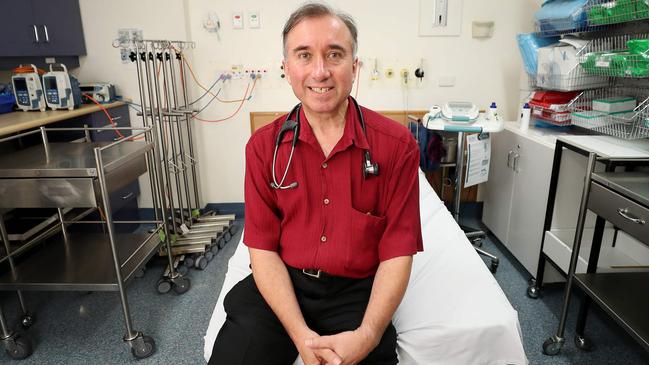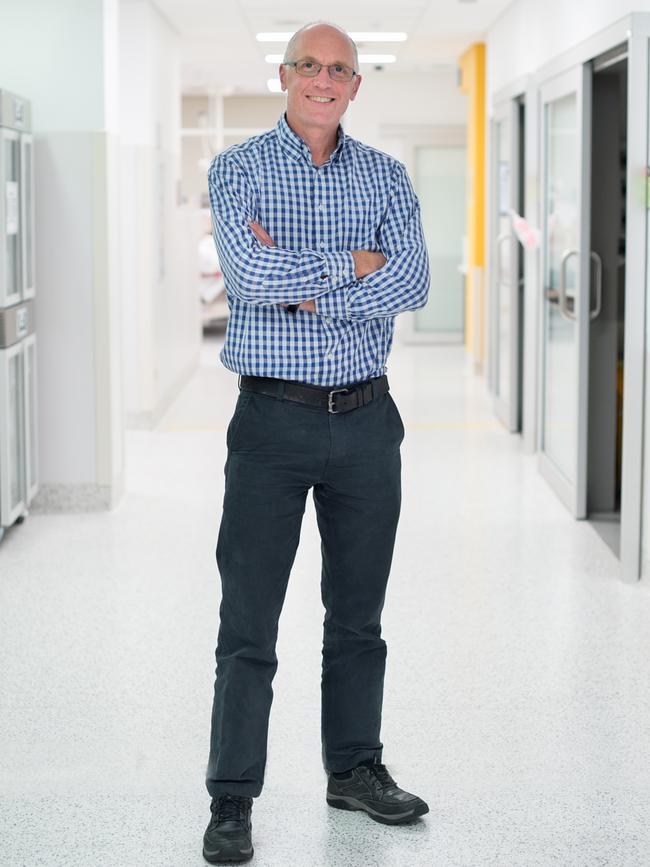Queensland doctors’ on what it’s really like to catch measles
As the number of measles cases across the state continues to climb, two Queensland doctors have shared their harrowing personal stories of their encounters with the deadly disease.
QLD News
Don't miss out on the headlines from QLD News. Followed categories will be added to My News.
TWO Queensland doctors have told harrowing personal stories of their encounters with measles to encourage people to ensure their vaccinations are up-to-date as the number of cases in the state continues to climb.
Gold Coast emergency physician Graham Jay has recently returned from 14 days treating measles cases in Samoa where he saw children dying from the highly infectious disease, including three in one family, all not yet five years old.
SECOND WORSE YEAR FOR MEASLES IN AUSTRALIA IN TWO DECADES
MEASLES CASES SURGE AS ANTI-VAXXERS UNDER HEALTH MESSAGES
With Queensland cases in 2019 standing at 64, the second-worst measles year in more than two decades, Prince Charles Hospital infectious disease specialist Robert Horvath has recounted the horrors of developing the illness as a junior doctor in his 20s.
“It’s an absolutely awful disease with long-lasting effects,” Dr Horvath said. “You wouldn’t wish it on anyone, particularly kids.”

The 54-year-old lost much of his sight for weeks after becoming so ill with measles in the 1990s he was admitted to hospital with “the worst headache of my life” and dangerously low blood pressure.
“I couldn’t see anything looking straight ahead,” he recalled.
“That was pretty traumatic. My corneas, the clear covering protecting your eyes, became inflamed and ulcerated as a result of the measles. It was like bubble wrap. My vision was too blurred to see anything useful.”
Fortunately, he recovered from the “horrific” illness, although it was months before he returned to normal.
Dr Horvath fell just outside the age group recommended for measles vaccination at the time, with people born before 1966 considered to be at low risk of catching the virus because it was assumed they had already developed it as children.
“Low risk doesn’t mean no risk,” he said. “I fell between the cracks because it was assumed that I was immune.”
Dr Jay, the Gold Coast University Hospital’s director of paediatric emergency, spent two weeks in Apia last month as part of an Australian medical team to assist Samoa in dealing with its measles outbreak. The Samoa measles epidemic has left 53 people dead, mainly children under the age of four.

“The majority of cases were young children and babies,” Dr Jay said.
“The children were all critically ill. They had measles complicated by secondary infection, such as pneumonia, gastroenteritis and dehydration.
“I was treating children that did die. I was involved with families that lost all of their children to measles. The children I was managing were unvaccinated.”
The latest Queensland Health figures show seven of the state’s 64 measles cases this year have been children aged under five. Only one case has been in the 50-plus age group.
About half the cases – 33 – have been reported in the Metro South region, taking in Brisbane’s southside, Logan and Redland regions.
The Gold Coast region has had 10 cases this year and Cairns and Hinterland Hospital and Health Service has recorded six. Metro North HHS, which takes in the Brisbane north region, including Caboolture and Kilcoy, has also had six cases, while the Sunshine Coast has had five.
Queensland Health data show 21 of this year’s cases acquired their infection overseas, resulting in a further 19 of the state’s measles cases.
Of the overseas-acquired cases, nine people acquired their infection in New Zealand, three in Vietnam, two in the Philippines, two in Samoa, one in Myanmar and one case in Thailand. Three cases visited multiple measles-endemic countries.
Across Australia, 256 measles cases have been recorded this year - the second-worst year for the extremely contagious virus since 1998 when 285 cases were diagnosed nationwide.
Dr Horvath said that if people were unsure whether they had received two doses of the measles, mumps, rubella vaccine, they would not be harmed by getting another dose.
He urged Queenslanders who developed measles symptoms - including a fever, fatigue, runny nose, a moist cough and sore, red eyes, followed a few days later by a blotchy red rash - to seek medical treatment as soon as possible.
“Always ring the general practitioner or hospital before attending to reduce the risk of infecting other patients,” Dr Horvath said.
For more information, phone 13 HEALTH.


